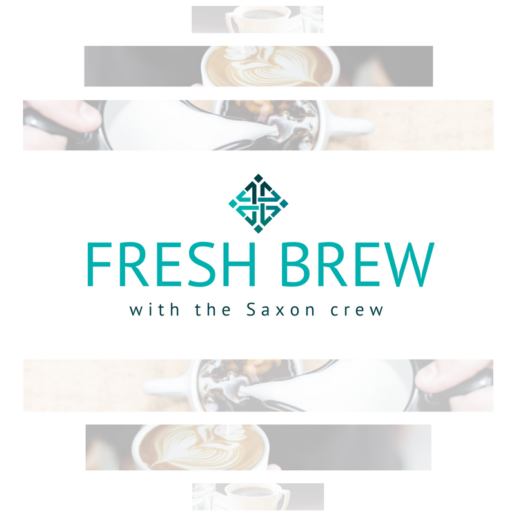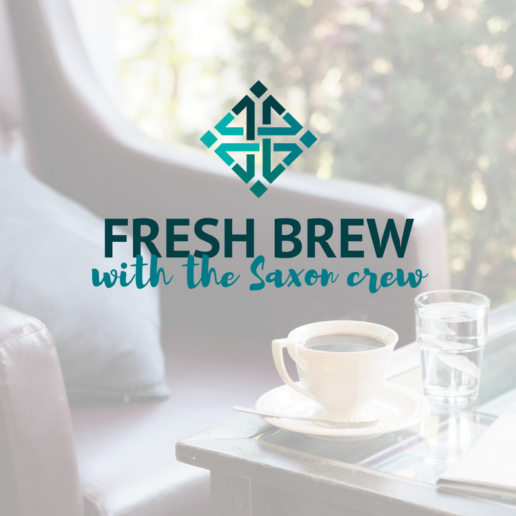Audit: What should I expect from a Department of Labor audit?
Being audited is a huge burden without the right preparations and defense. For companies, being audited, demonstrating proof, knowledge and compliance of the requirements in their workforce is a lengthy and stressful process, particularly when you get caught off guard. Staying prepared every step of the way will take the weight of a possible audit off your shoulders.
Employers should keep in mind that the U.S. Department of Labor (DOL) can audit employers at any time, although the most common reason for a DOL audit is a complaint from an employee. The DOL has also targeted employers in low-wage industries for wage and hour violations, particularly in the areas of agriculture, day cares, restaurants, garment manufacturing, guard services, health care, hotels and motels, janitorial services, and temporary help. By understanding the audit process and following the guidance below, employers will be better prepared to handle a DOL audit.
- The DOL typically provides little advance notice of an audit. However, you can request time to gather records. Typically, the amount of time an employer will have will depend on the auditor.
- Contact the auditor to find out specific information about the audit. Key questions to ask are the focus of the investigation (e.g., overtime pay compliance, exempt vs. nonexempt classification, minimum wage compliance), the time period for records the auditor wants to view, and the names of any employees that may be interviewed.
- Gather the records in accordance with guidance provided by the auditor. Be prepared to provide documentation related to the company compensation policies and procedures. Keep track of exactly what information was provided. Do not provide records other than what the auditor requests.
- Designate one or two company representatives to work with the auditor. Some employers choose to designate their company’s legal counsel; other employers will designate senior managers. The representatives will have the duty to provide documents requested,arrange for any additional records to be provided to the auditor (if necessary) and coordinate employee interviews.
- During the audit, be courteous to and cooperative with the auditor. It is a good practice to provide a quiet area for the auditor to work in.
- At the end of the audit, ask the auditor to provide a summary of the results of the investigation. This information will help an employer review options for resolutions if any violations are found. If violations are found, employers are encouraged to consult legal counsel before any settlements are reached with the DOL.
To be proactive, employers should consider a self-audit, which consists of the following steps:
- Review job descriptions.
- Understand the differences between federal and state laws and ensure that the laws are correctly applied to employees.
- Ensure that FLSA classifications are correct.
- Keep accurate payroll records.
- Apply policies consistently.
- Make sure all records are complete and work to resolve any inconsistencies.
- Determine how to address any areas of concern identified via the self-audit.
Source:
SHRM (12 September 2012). "Audit: What should I expect from a Department of Labor audit?" [web blog post]. Retrieved from address https://www.shrm.org/resourcesandtools/tools-and-samples/hr-qa/pages/whatshouldiexpectfromadolaudit.aspx
Individual Insurance Market Performance in Late 2017
In this article from the Kaiser Family Foundation, we will take a look at the individual insurance market performance as of late 2017. This is a great article for employers to get the low down on how to understand and read performance charts, as well as prepare for any instability in the next quarter.
Concerns about the stability of the individual insurance market under the Affordable Care Act (ACA) have been raised in the past year following exits of several insurers from the exchange markets, and again with renewed intensity in recent months during the debate over repeal of the health law. Our earlier analysis of first quarter financial data from 2011-2017 found that insurer financial performance indeed worsened in 2014 and 2015 with the opening of the exchange markets, but showed signs of improving in 2016 and stabilizing in 2017 as insurers began to regain profitability.
In this brief, we look at recently-released third quarter financial data from 2017 to examine whether recent premium increases were sufficient to bring insurer performance back to pre-ACA levels. These new data from the first nine months of 2017 offer further evidence that the individual market has been stabilizing and insurers are regaining profitability, even as political and policy uncertainty and the repeal of the individual mandatepenalty as part of tax reform legislation cloud expectations for 2018 and beyond.
Third quarter financial data reflects insurer performance in 2017 through September, before the Administration ceased payments for cost-sharing subsidies effective October 12, 2017. The loss of these payments during the fourth quarter of 2017 will diminish insurer profits, but nonetheless, insurers are likely to see better financial results in 2017 than they did in earlier years of the ACA Marketplaces.
We use financial data reported by insurance companies to the National Association of Insurance Commissioners and compiled by Mark Farrah Associates to look at the average premiums, claims, medical loss ratios, gross margins, and enrollee utilization from third quarter 2011 through third quarter 2017 in the individual insurance market.1 Third quarter data is year-to-date from January 1 – September 30. These figures include coverage purchased through the ACA’s exchange marketplaces and ACA-compliant plans purchased directly from insurers outside the marketplaces (which are part of the same risk pool), as well as individual plans originally purchased before the ACA went into effect.
Medical Loss Ratios
As we found in our previous analysis, insurer financial performance as measured by loss ratios (the share of health premiums paid out as claims) worsened in the earliest years of the Affordable Care Act Marketplaces, but began to improve more recently. This is to be expected, as the market had just undergone significant regulatory changes in 2014 and insurers had very little information to work with in setting their premiums, even going into the second year of the exchange markets.
Loss ratios began to decline in 2016, suggesting improved financial performance. In 2017, following relatively large premium increases, individual market insurers saw significant improvement in loss ratios, averaging 81% through the third quarter. Third quarter loss ratios tend to follow the same pattern as annual loss ratios, but in recent years have been lower than annual loss ratios.2 Though 2017 annual loss ratios are likely to be impacted by the loss of cost-sharing subsidy payments during the last three months of the year, this is nevertheless a sign that individual market insurers on average were beginning to stabilize in 2017.
Margins
Another way to look at individual market financial performance is to examine average gross margins per member per month, or the average amount by which premium income exceeds claims costs per enrollee in a given month. Gross margins are an indicator of performance, but positive margins do not necessarily translate into profitability since they do not account for administrative expenses. As with medical loss ratios, third quarter margins tend to follow a similar pattern to annual margins, but generally look more favorable as enrollees are still paying toward their deductibles in the early part of the year, lowering claims costs for insurers.
Looking at gross margins, we see a similar pattern as we did looking at loss ratios, where insurer financial performance improved dramatically through the third quarter of 2017 (increasing to $79 per enrollee, from a recent third quarter low of $10 in 2015). Again, third quarter data tend to indicate the general direction of the annual trend, and while annual 2017 margins are unlikely to end as high as they are in the third quarter, these data suggest that insurers in this market are on track to reach pre-ACA individual market performance levels.
Underlying Trends
Driving recent improvements in individual market insurer financial performance are the premium increases in 2017 and simultaneous slow growth in claims for medical expenses. On average, premiums per enrollee grew 17% from third quarter 2016 to third quarter 2017, while per person claims grew only 4%.
Figure 3: Average Third Quarter Individual Market Monthly Premiums and Claims Per Person, 2011 – 2017
One concern about rising premiums in the individual market was whether healthy enrollees would drop out of the market in large numbers rather than pay higher rates. While the vast majority of exchange enrollees are subsidized and sheltered from paying premium increases, those enrolling off-exchange would have to pay the full increase. As average claims costs grew very slowly through the third quarter of 2017, it does not appear that the enrollees today are noticeably sicker than last year.
On average, the number of days individual market enrollees spent in a hospital through the third quarter of 2017 was similar to third quarter inpatient days in the previous two years. (The third quarter of 2014 is not necessarily representative of the full year because open enrollment was longer that year and a number of exchange enrollees did not begin their coverage until mid-year 2014).
Figure 4: Average Third Quarter Individual Market Monthly Hospital Patient Days Per 1,000 Enrollees, 2011 – 2017
Taken together, these data on claims and utilization suggest that the individual market risk pool is relatively stable, though sicker on average than the pre-ACA market, which is to be expected since people with pre-existing conditions have guaranteed access to coverage under the ACA.
Discussion
Third quarter results from 2017 suggest the individual market was stabilizing and insurers in this market were regaining profitability. Insurer financial results as of the third quarter 2017 – before the Administration’s decision to stop making cost-sharing subsidy payments and before the repeal of the individual mandate penalty in the tax overhaul – showed no sign of a market collapse. Third quarter premium and claims data from 2017 support the notion that 2017 premium increases were necessary as a one-time market correction to adjust for a sicker-than-expected risk pool. Although individual market enrollees appear on average to be sicker than the market pre-ACA, data on hospitalizations in this market suggest that the risk pool is stable on average and not getting progressively sicker as of late 2017. Some insurers have exited the market in recent years, but others have been successful and expanded their footprints, as would be expected in a competitive marketplace.
While the market on average is stabilizing, there remain some areas of the country that are more fragile. In addition, policy uncertainty has the potential to destabilize the individual market generally. The decision by the Administration to cease cost-sharing subsidy payments led some insurers to leave the market or request larger premium increases than they would otherwise. A few parts of the country were thought to be at risk of having no insurer on exchange, though new entrants or expanding insurers have since moved in to cover all areas previously at risk of being bare. Signups through the federal marketplace during the recently completed open enrollment period were higher than many expected, which could help to keep the market stable. However, continued policy uncertainty and the repeal of the individual mandate as part of tax reform legislation complicate the outlook for 2018 and beyond.
Methods
We analyzed insurer-reported financial data from Health Coverage Portal TM, a market database maintained by Mark Farrah Associates, which includes information from the National Association of Insurance Commissioners. The dataset analyzed in this report does not include NAIC plans licensed as life insurance or California HMOs regulated by California’s Department of Managed Health Care; in total, the plans in this dataset represent at least 80% of the individual market. All figures in this data note are for the individual health insurance market as a whole, which includes major medical insurance plans sold both on and off exchange. We excluded some plans that filed negative enrollment, premiums, or claims and corrected for plans that did not file “member months” in the third quarter but did file third quarter membership.
To calculate the weighted average loss ratio across the individual market, we divided the market-wide sum of total incurred claims by the sum of all health premiums earned. Medical loss ratios in this analysis are simple loss ratios and do not adjust for quality improvement expenses, taxes, or risk program payments. Gross margins were calculated by subtracting the sum of total incurred claims from the sum of health premiums earned and dividing by the total number of member months (average monthly enrollment) in the individual insurance market.
Source:
Cox C., Semanskee A., Levitt L. (4 January 2018). "Individual Insurance Market Performance in Late 2017" [web blog post]. Retrieved from address https://www.kff.org/health-reform/issue-brief/individual-insurance-market-performance-in-late-2017/
Communication. HR’s Ticket to Success
Effective communication within the workplace is a key to a successful business. One of our main initiatives this year is to look into creative ways to effectively communicate with employees. In this article, SHRM focuses on HR, and the importance of communication between HR professionals and employees.
HR Professionals are awesome in many ways. We do great work, for majority of us, we do it not because it’s a job, but because it is truly what we love. Unfortunately, even the greatest HR professional can have down falls, and one might be, not being able to communicate effectively.
Learning to communicate is a key skill for HR professionals, but we sometimes forget one part of communication. Listening.
It’s Monday afternoon, you’re deep in your office, catching up on what happened over the weekend. You’ve already made your rounds, talking to coworkers or being out at the field site, and then you get a knock on the door. An employee is there asking if you, “Have a minute” to discuss an issue he or she is having, and you clear off the desk and break out your notebook to.
We are listening and then we start playing out different options in our head and we stop. We start asking questions in the middle of the employees’ issue because we want to solve it or it’s something we think we’ve heard before, so we automatically know what needs to happen. STOP.
Stop trying to fix an issue before you’ve heard the entire story.
Stop tuning out because you think you already know the answer.
There is enough data to show employees won’t come to HR because they have had, or heard, a bad experience, they don’t think they can trust us or what we “plan” to do, and they don’t think we listen to their concerns.
Here is what you should do:
Allow the employee to finish everything they need to say. Take notes while you’re listening to them and then get clarity at the end. This way, you have their entire story, the one they’ve played out in their head over and over before they walked in your door. Do not go automatically on the attack, unfortunately, this can be very hard for HR, we are trained to question everything. Listen clearly to everything they are telling you, all the people they’ve named, and sometimes what they think should happen. Listen to what they are experiencing and once they are done, then start the investigation or solutions to how they can fix a problem that they might be having.
Communication in HR will be one of the keys to turning around peoples view on the HR department, if we are willing to listen completely.
Source:
Wilkes J. (8 January 2018). "Communication. HR’s Ticket to Success" [web blog post]. Retrieved from address https://blog.shrm.org/blog/communication-hr-s-ticket-to-success
DOL Proposes Rule to Expand Association Health Plans for Small Employers
What are the pros and cons of the proposed rule by the DOL allowing small business to purchase health insurance without some of the restraints imposed on smaller employers by the ACA and individual states? Let's take a look.
A proposed rule by the U.S. Department of Labor (DOL) would allow small businesses to band together and purchase health insurance without some of the regulatory requirements that the individual states and the Affordable Care Act (ACA) impose on smaller employers.
Advocates of the proposal say that it will make it easier for small businesses to afford better coverage for their employees. Critics contend that it's a way to get around the ACA requirement that plans cover essential health benefits.
The proposal, published in the Federal Register on Jan. 5, expands access to what the rule calls "small business health plans," which are more commonly known as association health plans.
The proposed rule attempts to achieve many of the objectives of the Small Business Health Fairness Act introduced in Congress last year, which also sought to allow small businesses to offer employees health coverage through association health plans.
The rule modifies the definition of "employer" under the Employee Retirement Income Security Act (ERISA) regarding entities—such as associations—that could sponsor group health coverage. An association can be formed for the sole purpose of offering the health plan.
A broader interpretation of ERISA could potentially allow employers anywhere in the country that can pass a "commonality of interest" test to join together to offer health care coverage to their employees. For instance, an association could show a commonality of interest among its members on the basis of geography or industry, if the members are either:
- In the same trade, industry or profession throughout the United States.
- In the same principal place of business within the same state or a common metropolitan area, even if the metro area extends across state lines.
Sole proprietors also could join small business health plans to provide coverage for themselves as well as their spouses and children.
"Many small employers struggle to offer insurance because it is currently too expensive and cumbersome," the DOL said in a press release. "Up to 11 million Americans working for small businesses/sole proprietors and their families lack employer-sponsored insurance. … These employees—and their families—would have an additional alternative through Small Business Health Plans (Association Health Plans)."
"With the passage of the tax bill, which includes a reduction of the individual mandate penalty, it's very likely that many people will drop their health care coverage in the individual marketplace," said Chatrane Birbal, the Society for Human Resource Management's senior advisor for government relations. Association health plans "could provide an option for small employers to offer competitive and affordable health benefits to their employees, thereby increasing the number of Americans who receive coverage through their employer," she noted.
For most midsize-to-large employers and their employees, however, the proposed rule will likely result in no change in health coverage, Birbal said.
Large Group Treatment for Small Employers
The ACA requires that nongrandfathered insured health plans offered in the individual and small group markets provide a core package of health care services, known as essential health benefits. Large employer group plans and self-funded plans are not required to comply with the essential benefit requirements.
Last October, President Donald Trump signed an executive order directing the DOL and other agencies to issue regulations that would allow more employers to band together and purchase health care plans, including across state lines. The DOL's proposed rule would do this by allowing employers that currently can only purchase group coverage in their state's small group market to join together to purchase insurance in the less-regulated large group market. The 50 states most often limit the large group market to employers with 50 or more employees, while a handful of states limit this market to employers with 100 or more employees.
By joining together, employers could not only avoid those regulatory restrictions that pertain only to the small group market, but also could reduce administrative costs through economies of scale, strengthen their bargaining position to obtain more favorable deals, enhance their ability to self-insure, and offer a wider array of insurance options, the DOL said.
The rule would maintain current employee protections by:
- Preserving nondiscrimination provisions under the Health Insurance Portability and Accountability Act (HIPAA) and the ACA. with regard to association health plans.
- Clarify that an association health plan cannot restrict coverage of an individual based on any health factor.
"Small Business Health Plans (Association Health Plans) cannot charge individuals higher premiums based on health factors or refuse to admit employees to a plan because of health factors," the DOL said. The Employee Benefits Security Administration "will closely monitor these plans to protect consumers."
The DOL will accept comments on the proposed rule during a 60-day period ending on March 6. "There are likely to be a number of changes to the proposed regs before they become final, and there really are a number of issues related to the proposal which need to be answered," said Robert Toth, principal at Toth Law and Toth Consulting in Fort Wayne, Ind.
Differing Reactions
Insurance sold nationwide through associations of small employers "would have to comply with far fewer standards" than current small group market plans, according to a statement by the Commonwealth Fund, a nonprofit foundation that supports expanding health care coverage to low-income and uninsured Americans. "Federal administrative changes that allow some health plans to bypass state and federal rules but not others create an uneven playing field, destabilize insurance markets, and put consumers at risk."
"Allowing the expansion of association health plans could mean the proliferation of coverage that does not provide the essential benefits people with diabetes need to effectively manage their disease and to prevent devastating and costly complications," said a statement from the American Diabetes Association.
The proposal, however, is supported by the National Retail Federation. "Main Street retailers need more affordable health care options and a level playing field with larger companies that are better positioned to negotiate for lower insurance costs," said David French, senior vice president for government relations at the federation, in a statement.
"These changes could be attractive to small employers with relatively healthy employees and who would not need the full range of benefits offered by the ACA's exchange plans" for the small group market, said Beth Halpern, health law partner at Hogan Lovells in Washington, D.C.
Like Trump's executive order, the proposed regulation seeks "to liberalize the rules to build large insurance pools of small employers," said Perry Braun, executive director at Benefit Advisors Network (BAN), a Cleveland-based consortium of health and welfare benefit brokers. "Spreading the risk across large numbers of participants in an insurance pool is thought to bring insurance premium stability," he said, adding, "It will be interesting to see [which brokers] enter the market to aggregate small businesses" into the new plans.
Source:
Miller S. (8 January 2018). "DOL Proposes Rule to Expand Association Health Plans for Small Employers" [ web blog post]. Retrieved from address https://www.shrm.org/ResourcesAndTools/hr-topics/benefits/Pages/DOL-association-health-plans-rule.aspx
Fresh Brew: Brianna Matchett Loves Alreddy Cafe
Welcome to our brand new segment, Fresh Brew, where we will be exploring the delicious coffees, teas, and snacks of some of our employees! You can look forward to our Fresh Brew blog post on the first Friday of every month.
“Loving what you do everyday is key.”
Brianna Matchett loves working as the Marketing Coordinator at Saxon Financial Services.
She was born and raised here in Cincinnati, Ohio and loves the outdoors. When she’s not working, she enjoys exploring the city of Cincinnati and spending time with friends and family. Her favorite hobbies include staying in and watching movies with popcorn and taking on new challenges.

Favorite Brew
Chai Tea Latte
“I love grabbing my favorite brew from my local coffee shop, Alreddy Cafe.”
Favorite Snack
BLT
“Mmm…BLT with two eggs from Alreddy Cafe goes perfectly with my latte.”
5 Tips to Improve the Employee Experience from an Employee Happiness Director
From SHRM, here are some helpful tips to improve happiness within your workplace.

Gone are the days of delighting customers at the expense of employees. Organizations today understand the value of employee happiness and are increasingly looking for ways to attract and retain top talent. This includes delighting employees at every touch point along the way from orientation and beyond.
And while this may mean something different for every organization, the following few tips may help to improve the employee experience, and if your employees are happy, your investors, customers and clients will follow.
Find employees who follow your north star. Hire employees who align with your core values. Our organization is mission-driven and focused on transforming lives. As a result, we look for good eggs who are driven by doing something for the greater good and leaving the world a better place. Big egos need not apply.
Prioritize happiness. Happiness means something different to every employee. Encourage your employees to find what makes them happy and prioritize that. Employee happiness is our CEO’s number one priority, so we held a workshop to design our culture of happiness together with input every single employee. We now measure employee happiness monthly and look for ways to delight our employees at every turn.
Ask and you shall receive. We constantly ask our employees about what’s working, what’s not working and how we can come together to build a culture of happiness through weekly, anonymous surveys. This provides leadership with valuable insights and empowers employees at all levels to help create an environment where we will thrive. Commit to delivering on employee suggestions that impact happiness when you can. You may not always be able to implement a suggestion but always ensure that the employee’s input is valued and was heard by leadership.
Be culturally relevant. While some may appreciate yoga breaks during all company meetings, others may want time off to volunteer with family and friends. Get to know your employees and understand what is truly meaningful to them. And always check back - life moves fast and personal priorities shift. Make sure your benefits and perks evolve to keep up with your dynamic population.
Give that gold star. It’s not all about perks. Offer work that’s challenging, acknowledge a job well done and reward employees in creative ways that are motivating to them. A company that successfully fosters a positive employee experience reaps the benefits in the form of enhanced engagement, happiness, productivity and retention.
Read the original article.
Source:
Andrade C. (4 December 2017). "5 Tips to Improve the Employee Experience from an Employee Happiness Director" [Web blog post]. Retrieved from address https://blog.shrm.org/blog/5-tips-to-improve-the-employee-experience-from-an-employee-happiness-direct
SaveSave
Top 10 Corporate Wellness Habits to Adopt During 2018
With the New Year in full swing, you may be considering how to turn your life around for the better - drop pounds, kill unhealthy chocolate addictions, quit binging every Netflix season ever, etc... But what about making lasting habits within the workplace?
Too often, we make a list of resolutions, and we forget where we spend most our time. Work is work, but that doesn’t mean we can’t implement some of the changes we make in our personal lives in the workplace, as well.
Today, we thought we’d offer up 10 different ideas for employers (or for employees to offer to their boss) to try and implement within the workplace – from wellness challenges to recess. Try one, combine a few, or do them all! The best part about making resolutions is making them unique to yourself and your company. So, don’t be afraid to get creative!
-
Offer healthy alternatives to traditional junk food items
Just a simple switch of snack foods in the office can cut unnecessary calories! Snacking on healthy items can make mindless snacking not so bad.

-
Offer standing desks
This easy switch will be one of the new year’s trendiest wellness tactics. Select desk options that allow users to easily switch between standing and sitting while working to allow for better blood flow throughout the day.

-
Try a wellness challenge
There’s nothing like some healthy interoffice competition to get people motivated. Select a wellness challenge that is easy and effortless to incorporate into your workplace. This could be a monthly or a weekly challenge, switch it up each month/week to keep things interesting!

-
On-site yoga classes
Another wellness trend that will continue into 2018 is managing stress through yoga. Mindfulness and meditation offer a slew of benefits to help employees relieve stress. Invite an instructor to your office every couple of weeks to guide the team through a yoga class.
-
Celebrate “Wellness Wednesday”
Make hump day something to celebrate and begin to tackle wellness in the office in a manageable way. One day a week can be a gateway to a much healthier lifestyle.

-
Listen to your employees
Survey employees to find out what is working and what isn’t instead of wasting time and energy on things that aren’t engaging your employee population. Use a site like Survey Monkey or Google Forms to create a survey to collect feedback from employees.

-
Participate in a 5K or other group fitness activities
Find a 5K in your community or choose another group fitness activity and cover the entry fee for anyone choosing to participate.
-
Post signs near elevators and escalators encouraging employees to take the stairs instead
Sometimes just seeing this reminder is all the motivation needed to be a little more active!
-
Schedule recess
Pick a 15-minute time of the afternoon for everyone to get away from his or her desk. Go outside, socialize with each other and enjoy some fresh air! Taking walks has also been shown to increase creativity.

-
Reward volunteers
Pay your employees for any volunteer hours up to a certain amount or allot a certain amount of time each month for employees to get away from their desk and get active in the community. Ideas include volunteering at a local food bank or cleaning up a local park, beach, or trail. You’ll benefits from both team building and group physical exercise!
Give one or more of these ideas a try and if they work out for you, let us know! The important lesson here is to remember your work-life is just as important to better as your personal life. When it comes to New Year Resolutions, make sure they encompass every aspect of your life and definitely don’t forget to include your employees in your thoughts.
Stay healthy, have fun, and Happy New Year!
Why a Strong Employee/Employer Relationship Is Important
Tied to the success of a company is the loyalty of its customers. While this customer-first mentality is necessary for the continuation of a company, employers sometimes forget to honor another intrinsic element of success and growth — the employee and employer relationship.
Employers are not drill sergeants who belt out orders for employees to follow. Why waste all that employee talent by burning them out? Work to build a strong and positive relationship with your employees, and they will grow as professionals and give back tenfold.
- Rethink Hierarchy: Help Employees Navigate the Organization
Employees have a place in the hierarchy of the company, but that doesn’t mean anyone should feel less than another or be demoralized. Every leader must understand the functions of their organization and its politics. Your organization’s culture sets the precedent for the professional personalities it hires. It should be clear to each employee why they were hired and why they are the best fit for a particular role.
Unfortunately, many employees simply exist in the vacuum of a cubicle and may not grow out of it. They feel boxed in and clueless about how to navigate the hierarchy and how to climb the ladder of success. An employee may need hand-holding or to be left alone, but that’s not the employee’s fault.
An employer has to find a way to meet them in the middle. Each employee has a hierarchy of needs that should be addressed, such as good benefits to meet basic needs, a positive work environment, a sense of place to develop a feeling of belonging and a way to become professionally self-actualized.
- Invest in Employee Networks and Loyalty
Just because you’ve moved up the ladder as a leader doesn’t mean you stop building relationships with those around you, including those under your supervision. You are a model of success for your employees, and you never know where your paths will lead or cross in the future.
Do your employees feel they can trust you? Do you empower and equip them with tools necessary to boost their influence and opportunities for success? Employee interoffice relationships and networks sculpt their reputation over the course of their careers.
Invest in employee networks to build loyalty and employee morale. Leaders should encourage networking inside and outside of the office. By strengthening influential networks, your employees will feel confident about their professional objectives and goals. They must learn that even professional relationships are not mutual all the time, and this negative exchange should be avoided. Loyalty is earned and learned when employees align with others who reciprocate support in networking, and that’s first gained from the employer.
Leaders should look at their own professional paths as an example for personal consideration. Name three others that have been in your network for years, and ask yourself if these are reciprocal relationships. Retrace the steps of your career, and remember leaders who held you back and why. Don’t be that leader. When employees climb the ladder, they will be in your network. Maintain reciprocal relationships with your employees, and teach them to do the same with others in their network.
- Broaden the Scope of Employee Experience
Don’t let employees become bored with their jobs. Of course, there are mundane tasks to every role that feel like chores, but employees should be allowed to challenge their knowledge. Let employees develop their skills by teaching them how to do the job of a leader. Broadening the scope of an employee’s experience prepares them for what comes next in their career, and they won’t fall short of expectations or feel their ambitions are neglected by an employer they trusted.
Many employers feel an employee should only understand what’s in their job description and nothing beyond fulfilling those duties. Wasn’t that why the employee was hired in the first place? An excellent leader sees the employee for their ambition and ability to grow, and then teaches them about the ecosystem of the workplace to advance.
Encourage employees to step up to the plate, beyond being a bench warmer, and take a swing at a big project or pitch an idea at a meeting. When an employee has the confidence to speak out and act independently, they gain the confidence to take risks, make involved decisions and lead.
Strong employee/employer relationships are vital to the success of the organization. The people and their relationships behind the scenes are the gears that move the mechanism of your company.
When your employees do their jobs well, achieve a new goal or do something successfully, reward them with networking opportunities and better benefits. Make the employee and employer relationship a strong and reciprocal one to be remembered for an entire career.
Read the original article.
Source:
Craig W. (20 September 2017). "Why a Strong Employee/Employer Relationship Is Important" [Web blog post]. Retrieved from address https://www.forbes.com/sites/williamcraig/2017/09/20/why-a-strong-employeeemployer-relationship-is-important/#480edb564d91
CenterStage: Traditional IRA, Roth IRA, 401(k), 403(b): What’s the Difference?
In this month’s CenterStage article, we are going to take a look at the difference between traditional IRA, Roth IRA, 401(k), 403(b), curtesy of Kevin Hagerty, a Financial Advisor at Saxon.

The earlier you begin planning for retirement, the better off you will be. However, the problem is that most people don’t know how to get started or which product is the best vehicle to get you there.
A good retirement plan usually involves more than one type of savings account for your retirement funds. This may include both an IRA and a 401(k) allowing you to maximize your planning efforts.
If you haven’t begun saving for retirement yet, don’t be discouraged. Whether you begin through an employer sponsored plan like a 401(k) or 403(b) or you begin a Traditional or Roth IRA that will allow you to grow earnings from investments through tax deferral, it is never too late or too early to begin planning.
This article discusses the four main retirement savings accounts, the differences between them and how Saxon can help you grow your nest egg.
“A major trend we see is that if people don’t have an advisor to meet with, they tend to invest too conservatively because they are afraid of making a mistake,” said Kevin. “Then the problem is that they don’t revisit it and if you’re not taking on enough risk you’re not giving yourself enough opportunity for growth. Then you run the risk that your nest egg might not grow to what it should be.”
“Saxon is here to help people make the best decision on how to invest based upon their risk tolerance. We have questionnaires to determine an individual’s risk factors, whether it be conservative, moderate or aggressive and we make sure to revisit these things on an ongoing basis.”
Traditional IRA vs. Roth IRA
Who offers the plans?
Both Traditional and Roth IRAs are offered through credit unions, banks, brokerage and mutual fund companies. These plans offer endless options to invest, including individual stocks, mutual funds, etc.
Eligibility
Anyone with earned, W-2 income from an employer can contribute to Traditional or Roth IRAs as long as you do not exceed the maximum contribution limits.
With Traditional and Roth IRAs, you can contribute while you have earned, W-2 income from an employer. However, any retirement or pension income doesn’t count.
Tax Treatment
With a Traditional IRA, typically contributions are fully tax-deductible and grow tax deferred so when you take the money out at retirement it is taxable. With a Roth IRA, the money is not tax deductible but grows tax deferred so when the money is taken out at retirement it will be tax free.
“The trouble is that nobody knows where tax brackets are going to be down the road in retirement. Nobody can predict with any kind of certainty because they change,” explained Kevin. “That’s why I’m a big fan of a Roth.”
“A Roth IRA can be a win-win situation from a tax standpoint. Whether the tax brackets are high or low when you retire, who cares? Because your money is going to be tax free when you withdraw it. Another advantage is that at 70 ½ you are not required to start taking money out. So, we’ve seen Roth IRA’s used as an estate planning tool, as you can pass it down to your children as a part of your estate plan and they’ll be able to take that money out tax free. It’s an immense gift,” Kevin finished.
Maximum Contribution Limits
Contribution limits between the Traditional and Roth IRAs are the same; the maximum contribution is $5,500, or $6,500 for participants 50 and older.
However, if your earned income is less than $5,500 in a year, say $4,000, that is all you would be eligible to contribute.
“People always tell me ‘Wow, $5,500, I wish I could do that. I can only do $2,000.’ Great, do $2,000,” explained Kevin. “I always tell people to do what they can and then keep revisiting it and contributing more when you can. If you increase a little each year, you will be contributing $5,500 eventually and not even notice.”
Withdrawal Rules
With a Traditional IRA, withdrawals can begin at age 59 ½ without a 10% early withdrawal penalty but still with Federal and State taxes. The Federal and State government will mandate that you begin withdrawing at age 70 ½.
Even though most withdrawals are scheduled for after the age of 59 ½, a Roth IRA has no required minimum distribution age and will allow you to withdraw contributions at any time. So, if you have contributed $15,000 to a Roth IRA but the actual value of it is $20,000 due to interest growth, then the contributed $15,000 could be withdrawn with no penalty.
Employer Related Plans – 401(k) & 403(b)
A 401(k) and a 403(b) are theoretically the same thing; they share a lot of similar characteristics with a Traditional IRA as well.
Typically, with these plans, employers match employee contributions .50 on the dollar up to 6%. The key to this is to make sure you are contributing anything you can to receive a full employer match.
Who offers the plans?
The key difference with these two plans lies in if the employer is a for-profit or non-profit entity. These plans will have set options of where to invest, often a collection of investment options selected by the employer.
Eligibility
401(k)’s and 403(b)’s are open to all employees of the company for as long as they are employed there. If an employee leaves the company they are no longer eligible for these plans since 401(k) or 403(b) contributions can only be made through pay roll deductions. However, you can roll it over into an IRA and then continue to contribute on your own.
Only if you take possession of these funds would you pay taxes on them. If you have a check sent to you and deposit it into your checking account – you don’t want to do that. Then they take out federal and state taxes and tack on a 10% early withdrawal penalty if you are not age 59 ½. It may be beneficial to roll a 401(k) or 403(b) left behind at a previous employer over to an IRA so it is in your control.
Tax Treatment
Similar to a Traditional IRA, contributions are made into your account on a pretax basis through payroll deduction.
Maximum Contribution Limits
The maximum contribution is $18,000, or $24,000 for participants 50 and older.
Depending on the employer, some 401(k) and 403(b) plans provide loan privileges, providing the employee the ability to borrow money from the employer without being penalized.
Withdrawal Rules
In most instances, comparable to a Traditional IRA, withdrawals can begin at age 59 ½ without a 10% early withdrawal penalty. Federal and State government will mandate that you begin withdrawing at age 70 ½. Contributions and earnings from these accounts will be taxable as ordinary income. There are certain circumstances when one can have penalty free withdrawals at age 55, check with your financial or tax advisor.
In Conclusion…
“It is important to make sure you are contributing to any employer sponsored plan available to you so that you are receiving the full employer match. If you have extra money in your budget and are looking to save additional money towards retirement, that’s where I would look at beginning a Roth IRA. Then you can say that you are deriving the benefits of both plans – contributing some money on a pretax basis, lowering federal and state taxes right now, getting the full employer contribution match and then saving some money additionally in a Roth that can provide tax free funds/distributions down the road,” finished Kevin.
Editor’s Note: This article was originally published in June 2017 and was updated in January 2018 for accuracy.
5 Tips For Employers To Earn Respect From Employees
Today, we are going to take a look at how to make respect something that revolves around the workplace. Use these tips to help you identify if you're doing what you need to do to earn and have respect with your coworkers.
In a previous blog (R-E-S-P-E-C-T: How To Earn Respect At Work), I discussed ways employees can earn respect at work. But earning respect shouldn’t be a one-way street – it should also be embraced by employers. Respect isn’t just something subordinates are forced to give managers. It’s a valuable asset for employers to show and earn in the workplace. Earning employee respect isn’t always easy, but when employers find ways to build respect at work, positive benefits ensue. How do you build employee respect at work?
According to Bruce J. Avolio, Ph.D., executive director at the Center for Leadership and Strategic Thinking in the University of Washington’s Foster School of Business, five tips for employers/managers to earn the respect of employees include:
-
- Be authentic: Be an authentic reflection of your organization’s espoused values and principles while promoting transparency and justice.
-
- Promote ‘ownership’: Make all employees feel like ‘owners’ versus ‘renters’, that their voice matters, and that people in positions of power listen to learn and engage with their employees.
- Develop potential: Help each individual feel like they are reaching their full potential and achieving their performance goals by investing in development.
- Create an energized culture: Create a positive climate where your followers’ energy is directed towards winning against competitors versus defending against internal detractors from what you’re trying to accomplish.
- Sacrifice when necessary: Be willing to sacrifice for the greater good of the organization when such sacrifices contribute to everyone’s success.
Bill Mixon, president of Universal Hospital Services, Inc., believes the key to earning employee respect is to empower employees and model the leadership behavior you desire by treating employees with dignity and respect. “If employees respect a person’s leadership, they are more prone to put those same leadership qualities into practice. Empowering employees to make decisions also builds trust. When you show employees you trust their knowledge and skills, you allow them to make smart decisions that benefit the company.”
Developing employee potential is also important. Notes Mixon, “When employees feel valued and appreciated, they take stronger ownership of their work and seek new opportunities to grow in their roles. This not only benefits the employee, but also the company and its customers.”
Howard Behar, retired president of StarbucksCoffee Company, used this same tactic of showing employees they are appreciated to help establish the Starbucks culture, which stresses the importance of people over profits. For example, Starbucks made sure there were no special perks for executives. “All employees are called ‘partners’ and there is no separation in any way of partners and the management team. Outside of pay and stock, every partner gets the same, even the same health insurance. We did this because it was the right thing to do, not because we thought it would help us build respect,” Behar explained.
In addition, the Starbucks management team held ‘open forum’ meetings where any partner could ask anything and they would address it. “It was open dialogue, and I mean really open dialogue during these meetings. If they wanted to debate what I was paid as the president of the company then they could,” said Behar. “No topic was off-limits.”
The management team also included a feedback card in every partner’s paycheck asking for comments on anything that seemed in contradiction to the company’s values and morals – with Behar reading every feedback card submitted. If an executive didn’t live up to the values and morals of the company, the organization would eject that individual. Behar added, “You could get fired a lot faster for not living the values than not achieving the financial numbers.”
Bottom Line: Are you a manager/employer looking to earn the respect of your employees? Then focus on relationships and trust. The foundation for earning respect is establishing good relationships with employees by building trust within the organization. Explains Behar, “If people are feeling trust, they will be more productive, are more willing to take risks, be creative, and solve difficult problems. It doesn’t mean issues won’t arise, but it means you can withstand just about anything because you can talk things through.”
Read the original article.
Source:
Quast L. (17 September 2012). "5 Tips For Employers To Earn Respect From Employees" [Web blog post]. Retrieved from address https://www.forbes.com/sites/lisaquast/2012/09/17/5-tips-for-employers-to-earn-respect-from-employees/#5c3c8a1826ac















